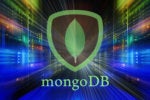
Is a serverless database right for your workload?
The serverless database model can be a great solution for unpredictable workloads and a number of other scenarios. Just don’t view it as the end all be all.

A deep dive into caching in Presto
Understand the caching mechanisms for the popular distributed SQL engine and how to use them to improve query speed and efficiency.

4 key new features in PostgreSQL 16
Postgres 16 highlights include updates around privilege administration, logical replication, performance improvements, and comprehensive monitoring features. Here is a breakdown.

What’s next for observability?
Today’s systems are exposing more of their underlying complexity to operators. These are the most exciting new developments along the journey of taming that complexity.

Cloud first is dead—cloud smart is what’s happening now
Not every application is meant for the cloud. Enterprises need to make optimal use of their on-prem infrastructure at the same time they leverage the benefits of public cloud.

A gentle introduction to static code analysis
Static code analysis offers extensive insights into code that can help you improve code quality and security, the speed of development, and even team collaboration and planning. Here’s everything you need to know.

How to succeed with GraphQL APIs
The open source query language GraphQL is the future of APIs, but getting it to hum (and hum at scale) takes some strategizing. Here’s what we’ve learned.

3 keys to making data democratization a reality
How do you build an organization of confident data users who are more responsive to customer needs? Focus on these three priorities.

A smarter way to bring data protection to SSD-based applications
Traditional RAID solutions reduce both the performance and endurance of solid state drives. Here’s how Pliops XDP provides reliable data protection to SSDs without the performance penalty.

What SQL users should know about time series data
Four key considerations to keep in mind when you need a database designed for analytical queries of vast quantities of time series data.

AI and the future of software development
Artificial intelligence will dramatically increase the pace of software development and make continuous delivery routine. Processes and roles will need to evolve, especially testing.

Why software developers prefer DORA metrics
Software engineering teams have tried all sorts of ways to measure the software development process and developer productivity. Here’s why DORA metrics are becoming the industry standard.

How WebAssembly will transform edge computing
By enabling cloud-native back ends to run on operational edges, Wasm allows us to deploy business logic closer to users or data, even to places Kubernetes and containers can’t go.

Where quantum computing is already delivering value
While gate model quantum computing holds immense promise for tomorrow, quantum annealing systems are solving complex optimization problems for enterprises today.

Why Raft-native systems are the future of streaming data
While Apache Kafka is slowly introducing KRaft to simplify its approach to consistency, systems built on Raft show more promise for tomorrow’s hyper-gig workloads.

Shift left for SaaS: More DIY means happier users
Enabling SaaS users to perform admin tasks themselves using self-service portals or APIs not only reduces the stress on IT admins, but also improves the productivity and satisfaction of workers.

6 best practices to keep Kubernetes costs under control
Successfully managing Kubernetes infrastructure and management costs requires granular monitoring, shared visibility, and effective controls. Here’s how to get there.

Wasm: 5 things developers should be tracking
We know Wasm works well in the browser. Now it’s time to get excited about the possibilities for Wasm on the server side.

6 key features of SingleStore Kai for MongoDB
SingleStore Kai for MongoDB brings real-time analytics to JSON documents by translating MongoDB queries onto SQL statements that are executed on SingleStoreDB. No changes to schema, data, or queries required.

Update or migrate? Planning for MySQL 5.7 EOL
Come October 2023, MySQL 5.7 will no longer receive updates or security patches. It’s time to understand your options and plan for the path ahead.





